5 Best Phones for Asphalt 9 in 2022 – All you need to know

Looking for the best phone for Asphalt 9? We can help you with that. In this article, we will explore a very popular topic that is the mobile game Asphalt 9: Legends. Here you will find everything you need to know before you make the final decision. Discover the world of gaming and find your perfect phone today.
Asphalt 9: Legends is the ultimate racing game. If you are a gamer and car enthusiast, then you will simply love this game. It has everything: prestigious cars, high-speed racing, amazing real-world locations. There’s nothing missing from it and the fun is guaranteed. The game is all about racing and doing some amazing aerial stunts. What are you waiting for? Pick your favorite car and head off to races. You get a wide selection of over 70 cars in the game and all of them can be further customized to your liking. You can even pick a car, change some of the parts and make your own racing machine. How awesome is that? You can start your journey in a Career mode and become all-time legend. Additionally, you can share this experience with a friend in an offline multiplayer mode. So shift into high gear as the challenge is on.
To determine, which phone is the best for Asphalt 9 we have to look at the phone’s specifications and game’s requirements. Now the simple answer here would be to get the best, newest phone on the market. However, the best of the best can be sort of pricy and there’s no need for you to spend all this extra money on the features you don’t really need. So the most reasonable solution here would be to get the phone that meets recommended requirements. But if you are low on cash and really want to play the game, you can also buy a phone that meets just the bare minimum. Which phone you choose is on you. It is just a matter of what you want out of this game, what kind of gaming experience you want. So keep that in mind when choosing your phone.
To meet the needs and wishes of everyone, we have prepared a list of 5 best phones for Asphalt 9. Here we feature the absolute best phone for the game, while also providing a well-performing budget option. Below you can read all about our recommendations and see which phone suits you best.
If you want to read a full detailed review of our recommended phone for best phone for Asphalt 9 click here. Or if you are more interested in our top budget pick we got you covered here.
DID YOU KNOW: Asphalt 9 features over 70 of the world’s best vehicles. The cars were selected based on their aesthetic looks and high performance. This is how they brought us the best and most desirable vehicles of the modern world. And you can further customize them!
NOTE: Below you can find a comparison table and a detailed description of the best phones for Asphalt 9.
TOP RECOMMENDED PHONES FOR Asphalt 9
| BEST AFFORDABLE | RECOMMENDED | ||||
| Xiaomi 11T Pro | Xiaomi Poco X3 Pro and F3 | iPhone 13 Pro | Samsung Galaxy S22 | Google Pixel 6 | |
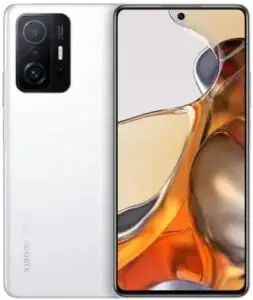 | 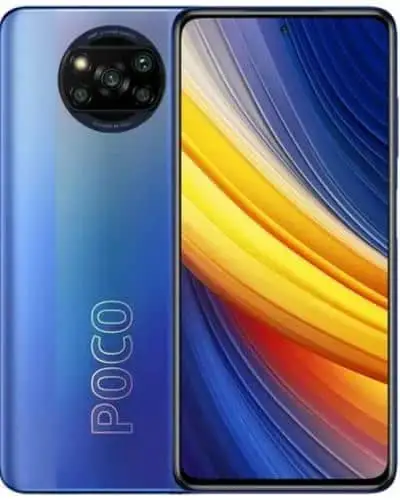 | 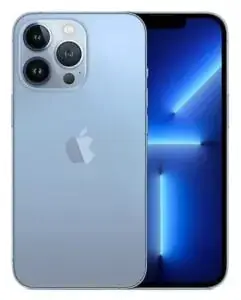 | 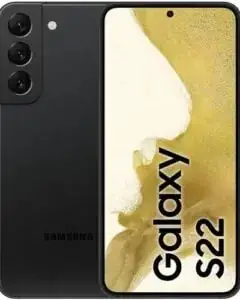 | ||
| Perfect For | Flagship performance at half the price | Performance without breaking the bank | Next level experience | Overall use | Mind blowing photo capabilities |
| Display | AMOLED 120 Hz | IPS LCD 120 Hz | 6.1 ” Super Retina XDR OLED | Dynamic AMOLED 120 Hz | AMOLED 90 Hz |
| Operating System | Android 11, MIUI 12.5 | Android 11, MIUI 12.5 | iOS 15 | Android 12 | Android 12 |
| Memory | Up to 256GB (12GB RAM) | Up to 256GB (8GB RAM) | Up to 1TB 6GB RAM | Up to 256GB (8GB RAM) | Up to 256GB (8GB RAM) |
| Camera | 108MP wide, 8MP ultrawide, 5MP telephoto macro | 48 MP | 12 MP (f/1.5, 26mm (wide), f/2.8, 77mm (telephoto),f/1.8, 13mm, 120Ëš (ultrawide)) | 50 MP Main, 10 MP Telephoto, 12 MP ultrawide | 50MP wide, 12MP ultrawide |
| Battery | Li-Po 5000 mAh | Li-Ion 5160 mAh | Li-Ion 3095 mAh | Li-Ion 3700 mAh | Li-Ion 4614 mAh |
| Sound | Stereo speakers | Stereo speakers | stereo speakers | Stereo speakers | Stereo speakers |
| Sensor | Fingerprint side-mounted | Side fingerprint | Face ID | Fingerprint ultrasonic | Fingerprint optical |
| 187 Reviews | 2,963 Reviews | 250 Reviews | 150 Reviews | 1,395 Reviews | |
| $449.50 | Price not available | $949.99 | $726.00 | $469.50 | |
| Buy on Amazon | Buy on Amazon | Buy on Amazon | Buy on Amazon | Buy on Amazon |
best phone for Asphalt 9 – Phone System Requirements
ANDROID
MINIMUM
- OS – Android 4.3 or higher
- Memory – 2GB RAM
- Storage – 2.1GB space
RECOMMENDED
- OS – Android 9.9 or higher
- CPU – Snapdragon 665
- GPU – Adreno 618
- Memory – 4GB RAM
- Storage – 3GB space
IPHONE OR IPAD
- OS – IOS 10.0 or higter
- Free Storage – 2.1 Gb or more
- iPhone 5 or latter
Some less powerful iPhones will still be able to run the game, but the gaming experience may not be as smooth as with officially supported devices. Please note that your device will require iOS 9.0 or later.
What are the best phones for Asphalt 9?
Xiaomi 11T Pro

| HARDWARE | 9/10 | |||
| BATTERY LIFE | 10/10 | |||
| DISPLAY | 9/10 | |||
| MEMORY | 9/10 | |||
| VALUE/PRICE | 10/10 |
| CUSTOMER REVIEWS |
Key Features
|
|
|
Detailed Review
The Xiaomi 11T Pro is an excellent device in almost every aspect and is rightfully considered as the best phone for Asphalt 9.
Probably one of the most shocking features is the ridiculously fast 120W charging. According to Xiaomi the phone can be charged from 0 to 100 in just 17 min. Of course in reality it takes a couple of minutes longer but nevertheless, it is at the moment the fastest charging phone on the planet.
The design of Xiaomi 11T Pro looks very sleek. The performance is also impressive. After all, the smartphone is equipped with a Snapdragon 888 that will handle everyday tasks with ease. Gamers should also be satisfied with the performance of the 11T Pro. Complex 3D games are not a challenge for this smartphone.
The OLED panel has a resolution of 2,400 x 1,080 pixels – with a size of 6.7 inches, the 11T Pro has a high pixel density of 393 ppi. This means that the display shows the content beautifully sharp. We also really like the high screen refresh rate of 120 Hz, because everything scrolls smoothly across the screen.
The phone also comes with a triple camera. As with the predecessor, Xiaomi relies on a 108-megapixel sensor in the main camera. An ultra-wide-angle lens (8 megapixels) and a tele-macro lens (5 megapixels) complement the camera setup on the back. The main camera is optically stabilized and shoots videos in either 4K at 60 frames per second or in 8K resolution at 30 frames per second. The camera is top-notch. The photos look good in both daylight and low light.
- Extremely short charging time
- Outstanding performance
- High-contrast and colorful display
- IP protection and wireless charging are missing
| LEARN MORE | OR | CHECK PRICE |
Xiaomi Poco X3 Pro and F3 – best affordable phone for Asphalt 9
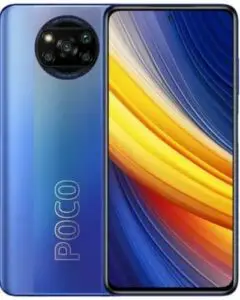
| HARDWARE | 7/10 | |||
| BATTERY LIFE | 9/10 | |||
| DISPLAY | 7/10 | |||
| MEMORY | 8/10 | |||
| VALUE/PRICE | 10/10 |
| CUSTOMER REVIEWS |
Key Features
|
|
|
Detailed Review
Poco X3 PRO and F3 are probably the best budget phones best phone for Asphalt 9 currently available on the market.
Poco X3 PRO comes with a 6.67 inch IPS LCD screen that also features a high refresh rate. Usually, you will find a 120 Hz refresh rate on more premium phones, but this one has it too. This basically makes scrolling, watching videos, and gaming super smooth and brings other benefits regarding display. There is also support for HDR10 and the phone features a Full HD resolution.
The phone runs on a Snapdragon 860 with Adreno 640 and is actually the only one to feature this chipset. It offers some of the best performance in its class. Compared to Galaxy A52 with Snapdragon 720G, the Poco X3 PRO just blows it out of the water. In terms of gaming performance, it is two times more powerful than Samsung’s mid-ranger. And it is much cheaper too. In fact, the phone can outperform almost all other mid-rangers.
You will most likely find a version with 6 GB of RAM, although there is a possibility of finding one with 8 GB. The 6 GB version is enough for everyday tasks and also for playing the most demanding games. You can still go for the 8 GB version which makes your phone a little more future-proof. The 6 GB version comes with 128 GB of storage and the 8 GB version can come either with 128 or 256 GB of storage. It does also offer a microSD card expansion so you don’t need to worry about running out of space.
The Poco X3 PRO has a large 5160 mAh battery and supports up to 33 W charging. It will take about 30 min to replenish 60% of the battery capacity, which is pretty good.
Another option, Xiaomi Poco F3, costs a bit more but improves in all areas. It still has 6.67 inches 120 Hz display but it is AMOLED, supports HDR10+, and can achieve greater brightness. The phone is powered by Snapdragon 870 and Adreno 650, which is an improved version of Snapdragon 865. One could say that it is the next best thing after Snapdragon 888. It comes with 6 or 8 GB of RAM.
Unfortunately, Poco F3 is not available in all countries. I added the links below to where the phone is available.
- Amazon DE – Germany
- Amazon FR – France
- Amazon IT – Italy
- Amazon ES – Spain
- Amazon UK – United Kingdom
- Outstanding value for the money
- 6.67-inch display 120 Hz display is amazing. Especially considering the price point
- Snapdragon 860 chipset is capable of running even the most demanding modern games smoothly
- Long autonomy provided by a large 5160 mAh battery
- It will get hot when playing demanding games. If possible we recommend playing without the silicon case for better heat dissipation
- Fast charging with 33 W also heats up the phone. This is normal but we don’t recommend playing any games while charging to avoid double heating
| LEARN MORE | OR | CHECK PRICE |
iPhone 13 Pro

| HARDWARE | 10/10 | |||
| BATTERY LIFE | 9/10 | |||
| DISPLAY | 9/10 | |||
| MEMORY | 9/10 | |||
| VALUE/PRICE | 10/10 |
| CUSTOMER REVIEWS |
Key Features
|
|
|
The iPhone 13 PRO is basically the same device like the iPhone 13 pro max, just a bit smaller. The more compact size can be appealing, but that does mean that the screen and battery aren’t so big. Apple has taken a different approach this year regarding its iPhone PRO model. Where the iPhone 12 pro and pro max had different cameras, this year you don’t have that to worry about. It’s all about the size the 13 pro is built around a 6.1-inch screen rather than a 6.7 inch one. It’s heavier than the iPhone 13, but still a lot easier to wield one-handed than the pro max. Just like the pro max through the build is nothing short of premium. There’s a stainless steel frame and corning glass back and it’s all IP68 rated against dust and water up to 6 meters in depth. This generation of iPhones also brings a new feature, a smaller notch cutout for the selfie cam and face id tag. The display of the iPhone 13 PRO is a 6.1″ XDR OLED, 1170 x 2532 with a 120Hz refresh rate. This display is great content is vibrant and crisp and contrasty thanks to the OLED technology. Colors are especially accurate here, and there’s HDR10. The max brightness is about the same as the PRO max’s and it’s impressive. We measured up to 850 nits with the manual slider and this boosts up to around 1060 nits in auto mode when in bright sun.
CAMERA:
The iPhone 13 pro and pro max have the same cameras and they’ve all seen an upgrade over last year. The 12MP (f/1.5 Dual Pixel AF sensor-shift OIS) main camera features a new sensor with larger pixels as well as sensor-shift stabilization. The 12 megapixel (3x zoom, f/2.8, PDAF, OIS) telephoto camera has a higher three-time zoom and the 12-megapixel (f/1.8, PDAF) ultra-wide now has autofocus. Since the camera quality is the same as the pro max we’ll go over it just briefly, since you can get a more in-depth picture by checking out our iPhone 13 pro max review. During the day the 13 pro’s photos are very good with plenty of detail and natural looking colors and dynamic range. The three times zoomed photos from the telephoto are also high in quality maintaining the overall colors and vibe of the main camera. The ultra-wide cam also maintains similar colors and dynamic range to the other two cameras – these photos are a bit softer though. The ultrawide has autofocus so you can shoot extreme close-ups with it.
CHIPSET:
All of the new iPhones run on apple’s newest silicon, this year it is Apple’s A15 Bionic 6GB RAM chipset. But the pro models get an extra performance boost when it comes to graphics, as they have a 5 core GPU rather than 4. Performance is considerably better than last year with the iPhone 13 pro and pro max topping the charts both CPU and GPU wise. Although the thermal management doesn’t match that of a dedicated gaming phone, the latest games run smoothly as butter and for peak performance, the iPhone 13 PROs set a bar that probably won’t be surpassed until next year’s iPhones come out.
AUDIO:
One other feature we noticed a slight difference in is the speaker quality. All of the iPhones come with stereo speakers and the 13 PRO scored very good on our loudness charts in line with the other models but we noticed that the low end isn’t quite as impressive as on the pro max. The quality is still great though.
BATTERY:
The iPhone 13 pro’s battery is a lot smaller than the pro max’s, the difference is over 1200 milliamp. As you’d expect the battery life is not as stellar. We praise the iPhone pro max for having the best battery life ever for an iPhone, but the regular pro is more middle of the road – it scored an 85-hour endurance rating in our tests which is still an improvement over last year.
CONCLUSION:
With the iPhone 13 PRO, you get the same compact size as the regular iPhone 13, just a little heavier and you also get all of the premium features of the iPhone 13 pro max. If you don’t mind a smaller screen the only real downside here compared to the PRO MAX is that you don’t get that great battery life, but in general if you’re looking for a more pocket-friendly device that’s a fair trade-off. It’s nice that Apple has given us a choice about the size of our iPhones, without making anyone feel like they’re missing out and both the iPhone 13 pro and pro max are equally worth recommending.
- Very good chipset.
- Great battery life.
- Amazing value for the price you pay
- Pricey
| LEARN MORE | OR | CHECK PRICE |
Samsung Galaxy S22 – best phone for Asphalt 9

| HARDWARE | 9/10 | |||
| BATTERY LIFE | 7/10 | |||
| DISPLAY | 9/10 | |||
| MEMORY | 10/10 | |||
| VALUE/PRICE | 9/10 |
| CUSTOMER REVIEWS |
Key Features
|
|
|
Detailed Review
When talking about the best phone for Asphalt 9 we cannot go past the Samsung Galaxy series. The Galaxy S22 is the smallest of the new line with its 6.1-inch display.
You are getting a very similar design to last year’s Galaxy S21, just a little bit smaller, a little more squared off and with a glass back instead of plastic.
The phone offers IP68 protection and the best ultrasonic fingerprint sensor in the game.
The S22 has a 1080p 120 Hz refresh rate display with an adaptive AMOLED panel and 1300 nits of brightness. You will have no problem viewing the content on the screen even under daylight. One cool feature to mention is definitely the ability to modulate the display refresh rate all the way down to 10 Hz to save battery.
The cameras on S22 got a major upgrade. You have a 50 MP main shooter with optical image stabilization, 10 MP telephoto with 3X optical zoom, and a 12 MP ultrawide. Ultrawide camera is also used to capture macro shots and is triggered automatically when you focus close to an object. In macro mode, the camera provides excellent results, better than any dedicated macro camera.
Regarding performance there is no question, this phone delivers. It features the latest Snapdragon 8 Gen Chipset and 8 GB of RAM. Even the most demanding games are running smoothly at ultra settings.
- Strong performance
- Fast fingerprint reader
- Overall great camera quality
- Very good display quality, especially brightness and contrast
- No charger included
- Sometimes sluggish loading times
| LEARN MORE | OR | CHECK PRICE |
Google Pixel 6
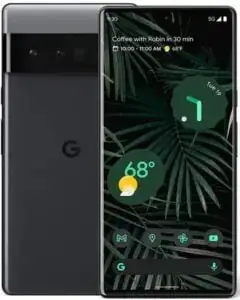
| HARDWARE | 8/10 | |||
| BATTERY LIFE | 8/10 | |||
| DISPLAY | 9/10 | |||
| MEMORY | 8/10 | |||
| VALUE/PRICE | 9/10 |
| CUSTOMER REVIEWS |
Key Features
|
|
|
Detailed Review
Google Pixel 6 comes to the list of best phone for Asphalt 9 as a strong mid-range phone with a good price to value ratio.
As a Pixel user, you can count on long and fast updates. But the hardware is also pleasing: the display is great and photos are great in most conditions. The special AI and AI functions of the Tensor chip expand the possibilities in everyday life.
The Pixel 6 has a 6.4-inch OLED display in 20:9 format with a resolution of 2400×1080 pixels. This results in a good sharpness of 411 ppi (pixels per inch).
Like the Pro, the Pixel 6 has Google’s Tensor chip, which was created in cooperation with Samsung. The Titan M2 is responsible for an extra hardware security layer. Tensor is not primarily about maximum computing power. However, the focus is on AI (artificial intelligence) and ML (machine learning). This should make itself felt, for example, in speech recognition or when taking photos.
There are two cameras on the back. The main camera has an internal resolution of 50 megapixels, but it ends up throwing out a 12.5-megapixel photo due to pixel binning. The ultra-wide-angle lens turns 48 into 12.5 megapixels. Like the Pro, the Pixel 6 is said to capture up to 150 percent more light thanks to the significantly larger image sensor compared to the Pixel 5, which is particularly worthwhile for photos taken under poor lighting. Even in the worst light conditions, the “Night Vision” mode still brings out amazing details with unexpectedly natural colors. Photos are good with the Pixel in almost all conditions and better than most top-of-the-line smartphones.
The camera only falls short when zooming. But this is to be expected without a dedicated telephoto camera. In this case, the Pixel 6 Pro might be a better choice.
- Great screen
- Good photo quality
- Wireless charging
- Waterproof and 5G
- No memory card slot
- Smooth back
| LEARN MORE | OR | CHECK PRICE |
Additional hardware information
CPU
The processor is the central processing unit in an electronic system such as a smartphone. The alternative and common English designation is CPU (Central Processing Unit). A processor is used to control various processes in the system. It handles task management and the distribution of data between individual units. The gigahertz value of a processor indicates its performance. It denotes the clock frequency with which the processing unit executes processes.
A cell phone processor works analogously to the CPU of a computer or controller in an electrical device. It processes individual instructions and program sections sequentially or simultaneously. At the same time, it manages data processing in the cell phone, for example during copy operations from the internal memory to a memory card or another device. The processor can consist of one or more computing cores that form the heart of an electronic system. In a smartphone, the CPU is responsible for the following tasks, among others:
- Execution of installed applications
- Controlling graphical displays via the graphics card
- Establishing connections such as WLAN or UMTS
- Processing user data
In simple words, the more powerful your CPU is, the better the game will run.
GPU
The GPU (Graphics Processing Unit) is a dedicated graphics processor in mobile devices. Its main task is to support the smartphone processor (CPU) in displaying 3D data. Including image processing, games, animations, VR applications, and augmented reality. A strong GPU affects the performance of the entire device and can also significantly improve energy efficiency. Therefore the battery capacity is exhausted more slowly.
With the constantly increasing specifications of mobile devices, especially due to ever higher display and camera resolutions, the role of the GPU is becoming more and more important. Accordingly, improved models are constantly entering the market. In system-on-a-chip (SoC) designs, the GPU is lasered into a chip together with the main processor and other components (multimedia processor, LTE modem, signal processor).
RAM
As soon as you execute a program, the associated data is stored in RAM. This means that programs load faster and are still available, even if you have already closed them. When you open an app, it loads all data into RAM the first time you start it. If you now close the app and start it again, the loading process takes less time. The data remains in the RAM as long as the device is supplied with power. If you turn off your smartphone or computer, all data stored in RAM is lost and has to be reloaded when you restart your apps and programs. Don’t worry, the draining of the memory does not affect any data that is in the main memory. So pictures, videos, and co. are still safe even after the power is turned off.
How long the app data remains in the RAM of your phone depends on how much it is available and how much of it other apps are using it. But the more you have it the better. And this is true also if you want to achieve the best gaming experience.
DISPLAY
The display is the most obvious component of a smartphone. It is the showcase for all content and the surface through which you interact with the device. The screen turns the built-in components inside out: It shows whether a smartphone works with a strong or weak chipset via smooth or jerky animations. It lets you judge the quality of the camera. And of course, it shows all the data and apps that are in the device’s memory.
Currently, two panel types are mainly found in smartphones: IPS LCD and OLED. In LCD (Liquid Crystal Display) technology, the individual pixels consist of liquid crystals that, in combination with a polarization filter, display a certain color depending on their orientation. In an IPS panel (In-Plain-Switching), the crystals are constructed in such a way that the display is particularly viewing angle stable. The flat backlight is crucial for the LC display.
The main advantage of OLEDs over IPS is the lower energy consumption. Especially with dark content, even illumination, and high contrast. One disadvantage is that the LEDs lose their luminosity to some degrees due to uneven use. This can result in a burn-in effect. Since the display substrate for the OLED matrix is often made of flexible plastic the phones can also have curved displays. OLED displays are being used more and more, especially in high-end phones.
BATTERY
The battery capacity of your phone does in principle tell you how long it will last before you need to recharge it. The bigger the battery the longer it should last. But it depends also on the power consumption which is in direct correlation with the hardware that is included in the phone, and the battery management algorithms that try to reduce the consumption and preserve the battery as much as possible. Except for the battery capacity, these values are never written in the specification of the phone as they are irrelevant for an average user.
The reason is that the biggest factor to how long your phone will last on one charge is how much you use it and how. For example the screen is one of the biggest energy consumers. So if you are using your phone a lot the battery will get drained quicker, obviously. Heavy multitasking and gaming are also energy demanding.
But nowadays many phones support fast charging, wireless charging etc. So you can charge your phone very quickly and you are good to go.
best phone for Asphalt 9 – CONCLUSION
Choosing a phone that will give you great gaming experience is a lot like choosing a gaming computer. You need to first look at the official hardware requirements for the game you are interested in. If you want to get the best experience the phone should meet at least recommended requirements. But actually when it comes to smartphones you should aim even higher.
It is well known that smartphones tend to get a little “slower” over time. Additionally, mobile games usually get updated more frequently. So to be on the safe side a good rule of thumb is to pick a phone that has at least one grade better components than recommended.
Any phone from our list will give you the best gaming experience. So if you stay within our selection of best phone for Asphalt 9 you are good and ready to go. Have fun gaming.